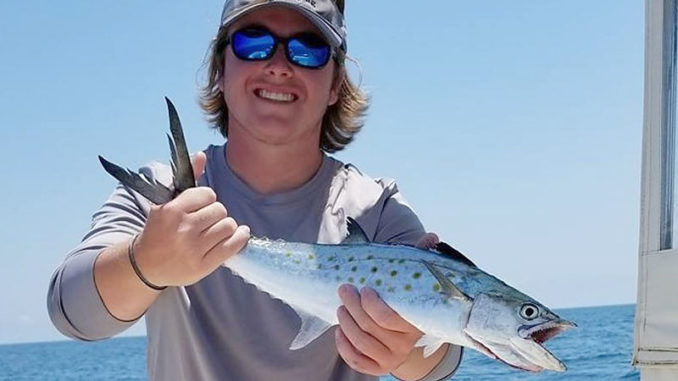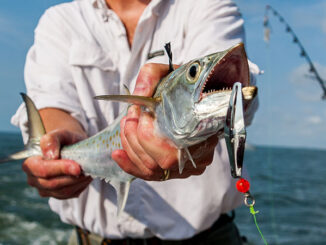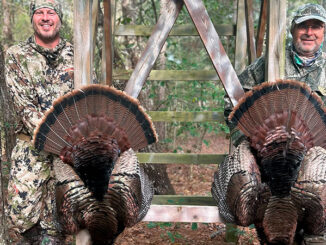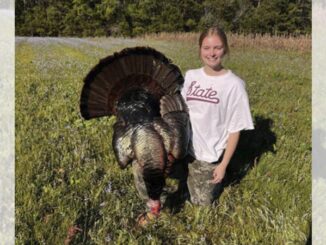
Mid-morning is time for the best bite on Spanish mackerel
The heat is on in more ways than one. In the ocean around the North Carolina-South Carolina border, the Atlantic is rolling with more than just big waves. Spanish mackerel are firing off in both big numbers and jumbo sizes this month. And anglers need to have lines in the water by mid-morning for the best chances to bring back a cooler full of beauties.
Ned Campbell of Murrells Inlet (S.C.) Outpost catches everything in the ocean, from flounder inshore to king-sized wahoo 70 miles offshore. But Spanish mackerel are one of his favorites.
“The best time to catch Spanish is about mid-morning during the summer. They bite better after the sun has (been) up some,” said Campbell (843-460-0186). “Between 8 and 9 a.m. is usually when we have the best bite in summer for Spanish.”
Spanish mackerel move nearshore early in the spring to feed on the bounty of baitfish along the beachfront, around inlets and around nearshore reefs. As the summer progresses, mackerel will shift around to take advantage of conditions. Anglers catch them using several different tactics. And luckily, Spanish aren’t too selective and will generally hit a wide variety of lures, especially ones that are small, shiny and moving fast.
Trolling and casting are both effective
“There are several ways to catch them, including trolling spoons, casting spoons and even free-lining live finger mullet. We traditionally troll small drone spoons or Clarkspoons on No. 1 or No. 2 planers,” he said.
“They start hitting green and pink Clarkspoons much better than the solid silver and gold spoons around mid-summer. They gravitate to the colors for whatever reason. I put out a selection of green, pink, or pink and green together. They will hit one color better on some days and others better on other days,” he said.
Campbell will troll spoons on planers to get them to run in the middle of the water column or will pull a weighted spoon on surface lines. Got-Cha’s Jigfish is his favorite lure that can also be cast into schools of feeding fish.
“We always have a few Jigfish tied on for trolling up top or for casting into schools of bait,” he said. “They are very versatile lures. We jig for gray trout with them, troll for Spanish behind the boat, or will use them for casting into a school of feeding Spanish. Everything will hit them and they are very effective for Spanish with a fast retrieve,” he said.
Click here for a unique Spanish mackerel recipe with a kick.




